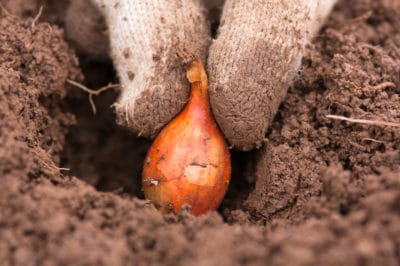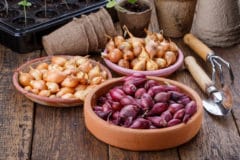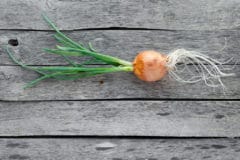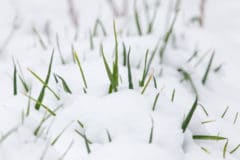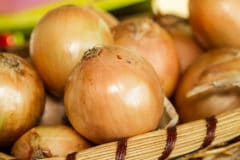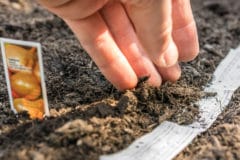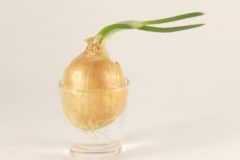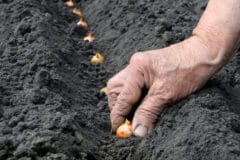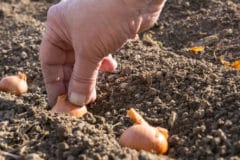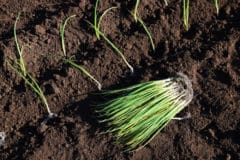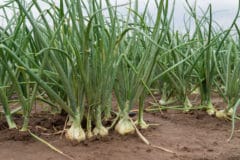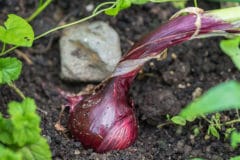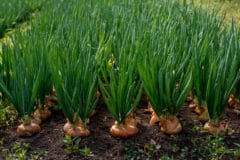Advantages of Growing Onion Sets
If you’re wondering why you should plant onion sets rather than seeds, read about the following advantages. If you live in a cool climate, such as the Midwest or North, or you don’t have the time or room to grow seeds indoors, onion sets are a practical option.
- Sets don’t have the germination problems of seeds.
- Less work to plant
- No need to thin as they grow
- No transplanting required
- Shorter time to reach maturity
- More practical for colder climates
- Don’t attract onion flies
- Resistant to mildew
What Is the Best Size for Onion Sets?
The preferred size for onion sets that produce large onions for eating is about three-quarters of an inch in diameter. If you can’t plant your sets right away, open the bag and spread the bulb out in a cool, well-lit area. This will prevent the sets from sprouting.
How Deep to Plant Onion Sets
How deep you plant your onion sets depends on the texture of your soil. If your garden has heavy-textured soil, all you have to do is press the bulbs into the soil. Then cover them with very little soil. If you have fine, light soil, the sets need to be planted from one to two inches deep. Usually, the bulbs are spaced from three to four inches apart and in rows from 12 to 18 inches apart. Plant the bulbs from the middle of March to mid-April.
Another option is to scatter the sets on the surface of your garden or on top of mulch. After you scatter the bulbs, cover them with hay. Your sets should start sprouting in about two weeks or less. That’s all there is to it.
How to Care for Planted Onion Sets
Protect your onion sets from birds and other invaders with garden netting. In addition, keep the bulbs free from weeds by hand pulling or carefully using a hoe. Too many weeds will suppress onion growth.
If any of the sets pull up from the soil, just push them back into the ground. Water your sets only if the weather is dry and break off onionflowersthat grow. You can stop watering when the bulbs become swollen. At that time, brush off the soil from the top of the bulbs, exposing them to sunlight.
When to Harvest Onion Sets
When the foliage turns yellow and tips over, the bulbs are mature and ready to harvest. Leave them in the soil for about two weeks and then use a garden fork to lift them out of the soil. You can let them dry out right in the garden or move them to sacking trays. It takes from one to three weeks for the onions to dry.
How to Store Onions
After you dry out the onion bulbs, cut the stalks to about one to two inches in length. Store the bulbs in a cool, dry, dark area that has air circulation. If you come across any bruised, diseased, punctured or wet bulbs, discard them. Also, discard any onion bulbs that have green tops or narrow necks.
Store your onions in mesh bags and just use a twist tie to close the bag. The mesh bag allows air to circulate, which prevents fungus and rot growth. You can also use paper bags with holes poked in the sides forstorage. Close up the bag with tape, a clothespin or paper clip. Avoid storing your onions in plastic because this speeds up spoilage time.
